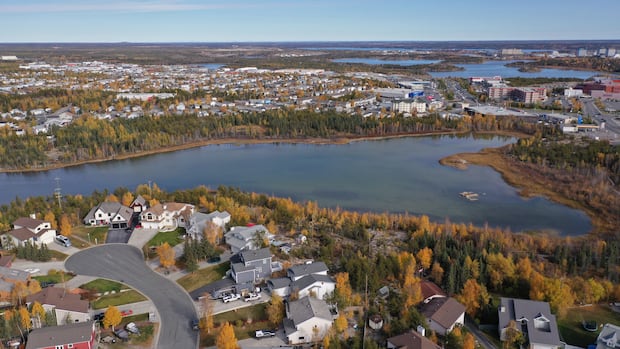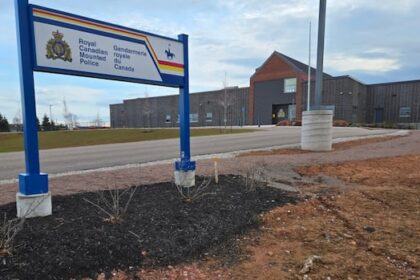NorthSome Indigenous MLAs in the N.W.T. are calling for a bigger push in the territory to hire Indigenous workers — and some suggest that could involve trimming the number of people accepted in the N.W.T. ‘s nominee program.’We have to start really focusing on our own, the people that we have in our communities,’ said one MLADevon Tredinnick · CBC News · Posted: Nov 17, 2025 6:00 AM EST | Last Updated: November 17Listen to this articleEstimated 4 minutesThe audio version of this article is generated by text-to-speech, a technology based on artificial intelligence.Overlooking Range Lake in Yellowknife in 2022. Some N.W.T. MLAs want the territorial government to do more to provide work opportunities for Indigenous youth. (Travis Burke/CBC)Some Indigenous MLAs in the N.W.T. are calling for a bigger push in the territory to hire Indigenous workers — and some suggest that could involve trimming the number of people accepted in the N.W.T.’s nominee program.The nominee program began in 2009 and helps immigrants move to the territory to work for local employers, while also providing a path to immigration. Employers have said the program helps fill labour gaps. But others — including Dene National Chief George Mackenzie — have questioned whether the nominee program is reducing opportunities for Indigenous youth in the territory to fill those gaps, and gain work experience. Dehcho MLA Sheryl Yakeleya agrees that Indigenous youth need more work opportunities. She said it can be a way to address deep-rooted problems in certain communities, like substance abuse. Dehcho MLA Sheryl Yakeleya said she sees a high level of unemployment in her community. (Julie Plourde/Radio-Canada)Speaking to CBC News on Thursday from Fort Providence, she said she sees a high level of unemployment in her community and many living on income support.”We need to shift. Right now it seems like we’re running someplace else to get something to help us,” she said. “There’s an opportunity for us to look within and see how can we make this work.”Asked about the nominee program, Yakeleya paused. “Maybe lessen it after a while,” she suggested. “We have to start really focusing on our own, the people that we have in our communities.”Program exists because of a skill gap, executive director saysOthers argue that the nominee program exists and is needed because of skills shortage in the territory.”We don’t have enough people trained locally in those areas where we have a shortage,” said François Afane, executive director for the Conseil de développement économique des Territoires du Nord-Ouest (CDETNO). The organization works with entrepreneurs, job seekers and newcomers.François Afane is the executive director of the Conseil de développement économique des Territoires du Nord-Ouest. He said it’s up to the N.W.T. government, working in partnership with Indigenous governments, to provide more job training for youth in the territory. (Sarah St-Pierre/CBC)Afane said he understands the concerns of Indigenous youth struggling to find employment, and he agrees it’s an important issue to address. But he doesn’t think that should happen at the expense of the nominee program.Instead, he said it’s up to the N.W.T. government, working in partnership with Indigenous governments, to provide more skills training for local youth.Monfwi MLA Jane Weyallon Armstrong said she can recall a time when Indigenous youth had more opportunities to develop their skills in the trades. “I would like to see that come back,” she said. Armstrong says she’s heard several stories of Indigenous youth struggling to find employment in the territory. But she said that’s not necessarily related to the nominee program, or immigration.Still, Armstrong suggested she’d be fine if the territory reduced the number of applicants it accepts to the nominee program. The federal government recently restored the territory’s annual allotment of 300 people.Armstrong said that number could be halved.“Reducing to 150 is good for me,” she said. Armstrong said she appreciated that Chief Mackenzie had raised the issue. “I have a lot of respect for Mr. Mackenzie for bringing this up because this is a sensitive topic,” she said.Jane Weyallon Armstrong, MLA for Monfwi, in Behchokǫ̀, N.W.T., earlier this year. Armstrong says she’s heard several stories of Indigenous youth struggling to find employment in the territory, but says that’s not necessarily related to the nominee program. (Luke Carroll/CBC)Armstrong said that jobs can be especially scarce for Indigenous youth in small communities. She said she would support an agreement between the N.W.T. government and private sector businesses to prioritize Indigenous hiring, similar to agreements with mines in the territory, and the government’s own hiring policy. Within the N.W.T. government, non-Aboriginal men and women make up the bulk of its more than 6,500 employees. Indigenous Aboriginal men make up less than 10 per cent of that total and Indigenous Aboriginal women make up around 20 per cent, according to the government’s most recent public service annual report. Since 2009, when the N.W.T. nominee program began, the employment rate for Indigenous people in all sectors in the territory has grown to about 52 per cent from roughly 46 per cent, with year-to-year fluctuations.Nunavut, which does not have a nominee program, historically hovers around a 45 per cent rate of employed Indigenous peoples since 2009. Meanwhile, the employment rate for non-Indigenous people in that territory hovers around 90 per cent, according to Statistics Canada. CBC News requested interviews with Caitlin Cleveland, the N.W.T.’s minister responsible for immigration and employment, as well as Premier R.J. Simpson, about the nominee program. Both declined.ABOUT THE AUTHORDevon Tredinnick is a reporter with CBC North in Yellowknife. You can reach him at devon.tredinnick@cbc.ca.
Tuesday, 18 Nov 2025
Canada – The Illusion
Search
Have an existing account?
Sign In
© 2022 Foxiz News Network. Ruby Design Company. All Rights Reserved.
You May also Like
- More News:
- history
- Standing Bear Network
- John Gonzalez
- ᐊᔭᐦᑊ ayahp — It happened
- Creation
- Beneath the Water
- Olympic gold medal
- Jim Thorpe
- type O blood
- the bringer of life
- Raven
- Wás’agi
- NoiseCat
- 'Sugarcane'
- The rivers still sing
- ᑲᓂᐸᐏᐟ ᒪᐢᑿ
- ᐅᑳᐤ okâw — We remember
- ᐊᓂᓈᐯᐃᐧᐣ aninâpêwin — Truth
- This is what it means to be human.
- Nokoma












